Taking a closer look at the impact of the SQF Complex Fire on the big trees
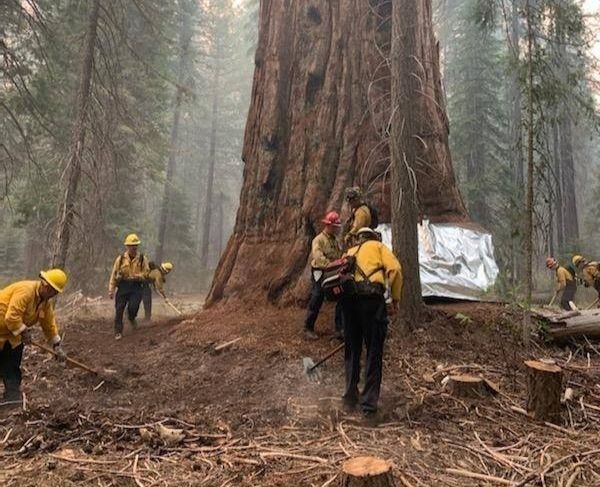
As we have noted before, the SQF Complex Fire (also known as the Castle Fire), has had a profound impact on the giant sequoia groves in the Sierra Nevada. As of mid-October, about 16,563 acres have burned in the giant sequoia range (roughly 34 percent of the range), most of which is old growth.
The larger issue is fire severity. Fire-resilient giant sequoia are likely to survive a low-to moderate-severity fire, which could really be largely restorative by reducing fuels and tree density. In contrast, high-severity fire that consumes nearly everything in its path is too hot for giant sequoia to survive. Although significant seedling regeneration may still occur—since the cones need heat to open—the ancient trees that are killed in this type of fire are irreplaceable. Using satellite data tracking images both pre-fire and post-fire, we were able to get preliminary figures for fire severity in the giant sequoia groves that burned in this fire. We will refine these numbers as the smoke in the area settles. Some areas burned at low to moderate fire severity (green and orange colors on the map), and in these areas the fire likely had some restorative effects. But, as shown in the map and outlined in the table, the preliminary fire severity data suggest that roughly 40% of the burned areas within the sequoia groves burned at high-severity, which means there will be potentially very large losses of ancient giant sequoia in this one fire.
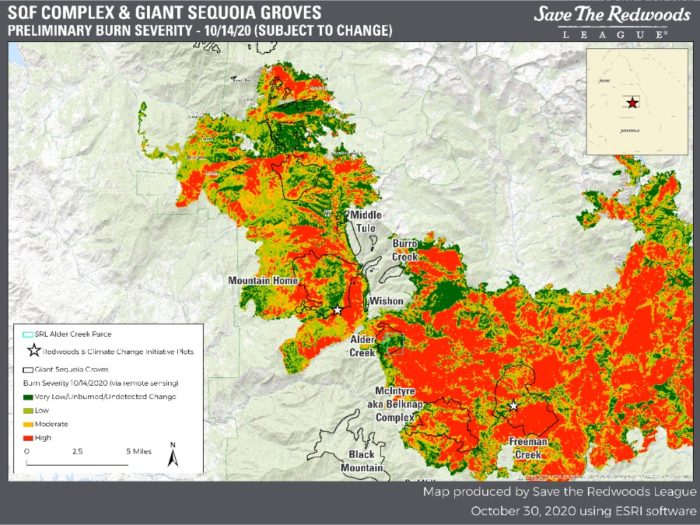
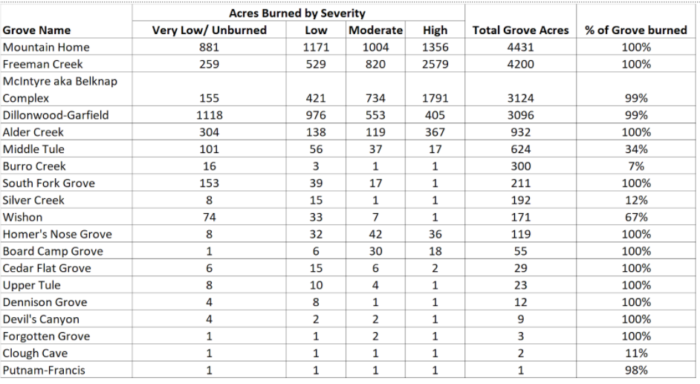
Giant sequoia are not only fire resilient, they are fire dependent for their regeneration, but fire exclusion has dramatically reduced their fire resilience. Both Yosemite and Sequoia-Kings Canyon National Parks have restored several groves using prescribed fire and some mechanical thinning, but most of the groves in the range still need restoration to be fire resilient in the warming climate.
2020 has been a record fire year not only for California, but for its impacts on giant sequoia as well. With heavy fuel loads as a result of fire exclusion and the warming climate, severe fires that kill giant sequoia have dramatically increased in the last five years. According to CalFire data, roughly 25% of the range burned in wildfires between 1910-2015. In the last five years, 65% of the range has burned – 33% of it in 2020 alone. Although giant sequoia need fire, these groves were generally in a heavily fuel-loaded state prior to these recent fires, leading to high severity and loss of ancient monarchs.
These fires are raising an alarm bell. But even as this is a story of loss, I still feel hope for the sequoia, because we know what we need to do to ensure that these ancient giants persist on the landscape. We need to restore more “good fire” so that the ancient trees—the oldest of which had survived hundreds of wildfires prior to fire exclusion—survive into the future.


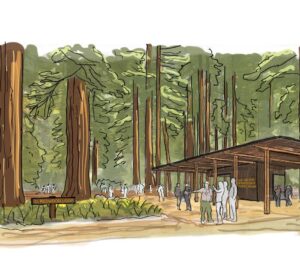

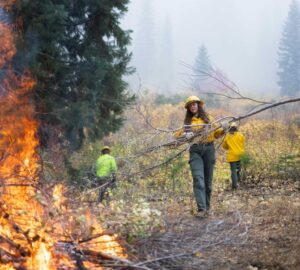
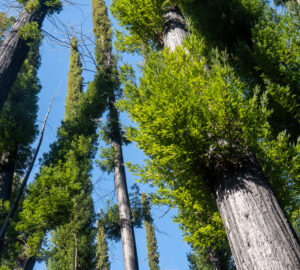
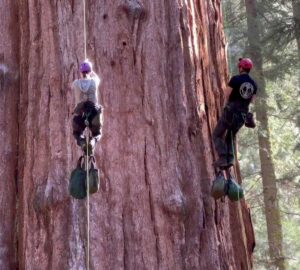
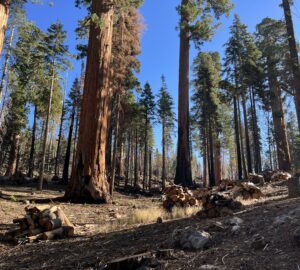
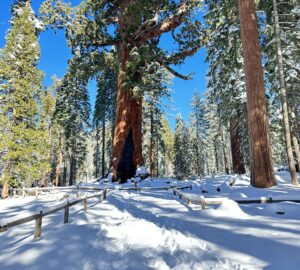
5 Responses to “Update on 2020 wildfire in the giant sequoia range”
Chris kimg
Is there a source for purchasing pieces of the old redwoods and sequoias that have wind fallen or been cut down by firefighting etc… would like to some to make some wood working pieces for my grandkids so they have some pieces of history that may not be around when they grow up. Some large fallen or cut or not completely burned to make my kids some plaques with engraved info about the redwoods and sequoias.
Fred M. Cain
What really blows my mind is that it has been known for quite some time that fuel loads desperately needed to be reduced in these forests. Yet too little was done. I can recall that they were conducting a prescribed burn in the Calaveras Grove back in the 1980s, so it would appear that they knew at least that long ago that doing this was necessary.
Regards,
Fred M. Cain,
Topeka, IN (Member)
Dolores
I was not ready to see so much red, so much high severity burn. I know nothing is forever, but they stood for thousands of years, those mammoths, and they grew from seeds that came from standing trees who know how old they were. And in a few years, our effect on the planet has caused this kind of superfire. I’m horrified, and sad, and glad that I got out to all of these groves on family camping trips and hikes. I feel like I’ve lost some of my best friends. I’ve been anticipating this report and hoping it would not be bad, but this is bad. Thank you, Save The Redwoods. Keep on keeping on.
Rip VAn
Will someone somewhere and at some time finally stop repeating the lie that sequoia cones need fire to open… It’s simply not true. Sequoia cones are unique in that they are living, chlorophyll-producing ‘organs’ of their tree. A cone will stay, unopened, on a branch of a sequoia tree for up to fourteen years. It needs to be separated from its host, by a squirrel or by strong wind, for it to dry up, open up, and release its seeds. Sequoia cones can also die and dry up on the tree itself; there is a burrowing insect that chews through the soft green cones, killing them and opening them up to seeding out. Sequoia cones don’t need fire to open up, they just need to be separated from their host. Finally, this last high intensity fire in the Sequoia Monument burned so hot that some sequoia trees exploded, presumably when the water they contained vaporized from the heat.
Jjule85
Yet Geoengineering is never mentioned.
Geoengineering uses toxic flammable chemicals to control the weather, and god knows what else. But the well heeled environmentalist is a well paid pawn.
Let’s get back to common sense.
Control burns
Stop straying Gates funded sky dimming chemicals. And quit using microwave haarp.